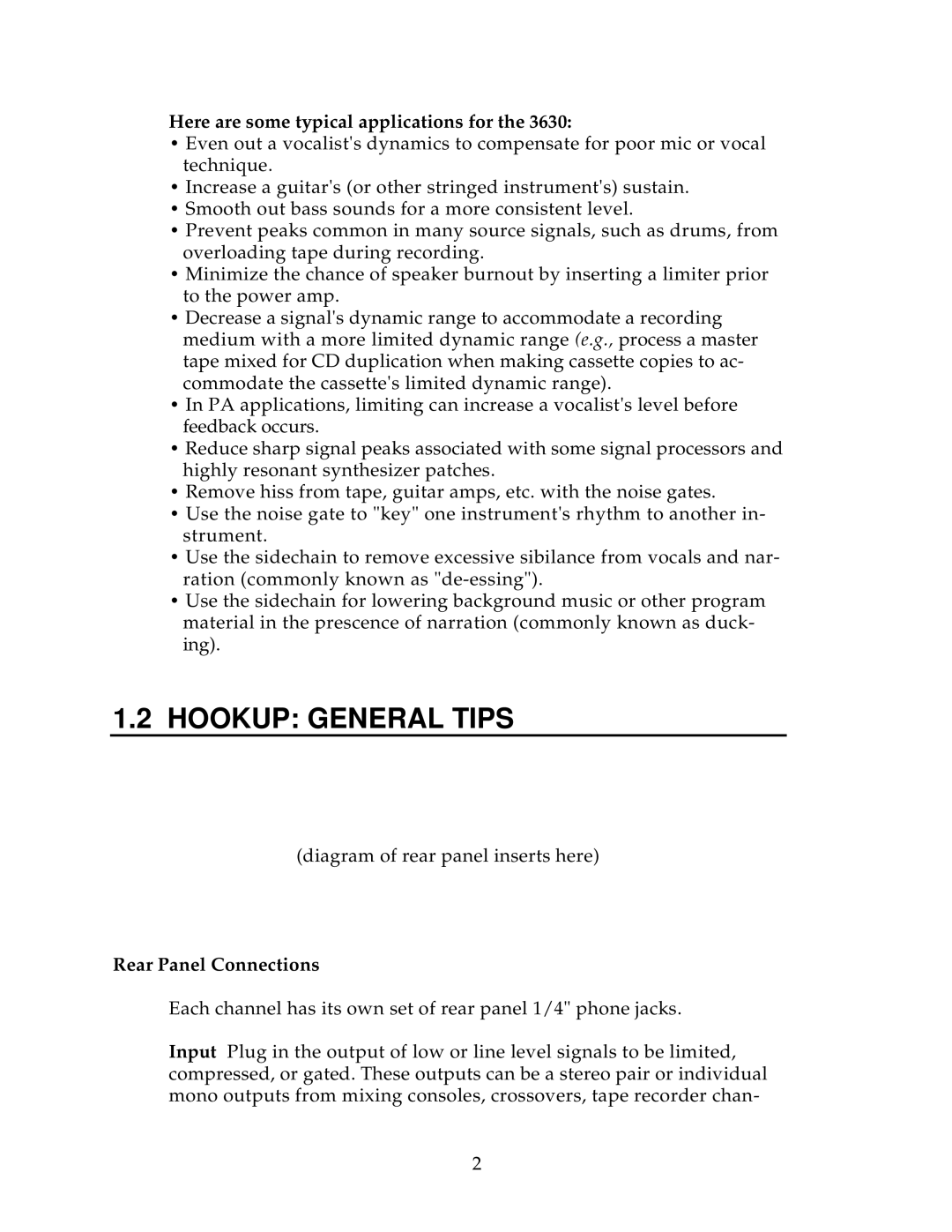Here are some typical applications for the 3630:
•Even out a vocalist's dynamics to compensate for poor mic or vocal technique.
•Increase a guitar's (or other stringed instrument's) sustain.
•Smooth out bass sounds for a more consistent level.
•Prevent peaks common in many source signals, such as drums, from overloading tape during recording.
•Minimize the chance of speaker burnout by inserting a limiter prior to the power amp.
•Decrease a signal's dynamic range to accommodate a recording medium with a more limited dynamic range (e.g., process a master tape mixed for CD duplication when making cassette copies to ac- commodate the cassette's limited dynamic range).
•In PA applications, limiting can increase a vocalist's level before feedback occurs.
•Reduce sharp signal peaks associated with some signal processors and highly resonant synthesizer patches.
•Remove hiss from tape, guitar amps, etc. with the noise gates.
•Use the noise gate to "key" one instrument's rhythm to another in- strument.
•Use the sidechain to remove excessive sibilance from vocals and nar- ration (commonly known as
•Use the sidechain for lowering background music or other program material in the prescence of narration (commonly known as duck- ing).
1.2HOOKUP: GENERAL TIPS
(diagram of rear panel inserts here)
Rear Panel Connections
Each channel has its own set of rear panel 1/4" phone jacks.
Input Plug in the output of low or line level signals to be limited, compressed, or gated. These outputs can be a stereo pair or individual mono outputs from mixing consoles, crossovers, tape recorder chan-
2
